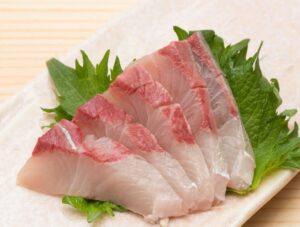Today, we would like to introduce you to a traditional Japanese fermented food called “Shio Koji.” Shio Koji has been a part of Japanese cuisine for a long time, and it is known for its ability to enhance flavors and bring out the delicious taste in dishes. Not only does it make food taste better, but it also has various health benefits. In our article, we will show you how to make Shio Koji at home and share some recommended recipes that you can try using this amazing ingredient. Get ready to add a new dimension of flavor to your meals with the power of Shio Koji.
What is Shio Koji?
Shio Koji is a fermented seasoning that is made from rice koji, salt, and water. It has been gaining attention as a convenient fermented food that allows you to easily incorporate the benefits of koji mold and enzymes. As the name suggests, Shio Koji is a rich and flavorful food that combines the base of saltiness with the deliciousness and sweetness of koji, along with the complex aroma typical of fermented foods. It’s truly astonishing how such simple ingredients can produce such remarkable results.
The most common way to use Shio Koji is by marinating meats and fish before grilling or cooking them. This process transforms the proteins in the ingredients into mouthwatering umami flavors, taking your dishes to the next level. Of course, it can also be used with vegetables, whether you want to mix, stir-fry, or fry them. Some people claim that adding a little Shio Koji to any dish instantly enhances its taste, making it a truly versatile seasoning.
History

Shio Koji has a rich history that stretches back to its origins in 1689 (Genroku 2). Kojiya Honten, the renowned establishment located in Saiki City, Oita Prefecture, has been diligently producing rice koji, the essential ingredient for various fermented condiments like miso, for over 330 years. Their signature product, Shio Koji, emerged from the ingenious combination of rice koji and salt, capitalizing on the natural enzymatic power of koji to elevate the flavor profiles of culinary creations.
Originally, in the Edo period, references to “salt koji pickles” in historical texts served as the catalyst for developing Shio Koji. While it was traditionally utilized as a pickling agent, Kojiya Honten ingeniously transformed it into a versatile and user-friendly seasoning that could effortlessly enhance a wide range of dishes. Since its introduction in 2007, Shio Koji rapidly gained popularity throughout Japan, owing in part to the deliberate decision not to register it as a trademark. Consequently, it became a beloved household staple nationwide. In recent years, the growing interest in fermented foods and their potential health benefits has further propelled the popularity of Shio Koji.
Recommended recipes to use Shio Koji
Chicken and Shio Koji
Karaage

Enjoy a satisfying main dish with simple seasoning of Shio Koji and ginger. It goes well with rice or on top of udon noodles. You can also freeze the seasoned chicken for later.
Salad Chicken

Rub chicken breast with Shio Koji and honey for a moist and flavorful salad chicken. Cook the chicken in a pot, let it cool in the refrigerator, and it’s ready to serve. It’s easy to make and great as a salad or sandwich filling.
Grilled Chicken Thighs with Negi (Green Onion), Salt, and Lemon

Perfect as a snack! This refreshing dish with the tanginess of lemon is great for appetizers. Mix chicken and seasonings in a bag, marinate, and then grill. The flavorful chicken is tender and goes well with rice and drinks.
Pork and Shio Koji
Shio Koji Pork

Enhance the umami flavor of pork with Shio Koji! The simplicity of this recipe allows you to enjoy the deliciousness of the ingredients. In this recipe, the pork is boiled, but it can also be delicious when grilled.
Minced Meat Topping

Perfect for meal prep and bento boxes, Shio Koji minced meat topping. It’s an easy dish where you simply stir-fry ground meat with Shio Koji. It’s recommended to serve it over rice or use it as a filling for omelets.
Heath Benefits

Fatigue Recovery Effect
Vitamin B1, which is contained in Shio Koji, efficiently converts carbohydrates into energy for bodily movement. Vitamin B1 is consumed in larger amounts during periods of overwork or fever, so supplementing the deficiency can help with fatigue recovery.
Skin Beautifying Effect
Vitamin B2 and B6 support the skin’s turnover process, promoting the renewal of skin cells and maintaining the health of the skin and mucous membranes. Vitamin B2 helps control sebum production, while vitamin B6 aids in the prevention of skin inflammation. Additionally, the kojic acid present in Shio Koji has an inhibitory effect on the production of melanin, which can cause blemishes and freckles.
Anti-Aging Effect
The rice koji used as a raw material in Shio Koji contains an amino acid called ergothioneine, which possesses a powerful antioxidant effect approximately 7,000 times stronger than vitamin E. Consuming antioxidants helps suppress DNA damage and lipid oxidation caused by free radicals, making it effective in preventing cancer and arteriosclerosis. Moreover, antioxidants can protect the brain’s nerves from damage caused by free radicals, potentially contributing to the prevention of dementia.
Intestinal Regulation Effect
Shio Koji contains lactic acid bacteria. Even if the bacteria are killed by heating, they still serve as food for beneficial bacteria in the intestines, increasing their numbers and improving the intestinal environment. Additionally, koji is rich in dietary fiber, which also promotes the growth of beneficial bacteria. A healthy intestinal environment not only improves bowel movements but also enhances skin health and immune function.
Relaxation Effect
Shio Koji contains a stress-relieving component called GABA, which helps suppress nerve excitability and provides relaxation and stress relief.
Reduce Sodium Intake
Excessive consumption of salt raises the sodium concentration in the blood, causing an increase in blood volume to maintain osmotic pressure. Increased blood volume leads to an increased load on the peripheral blood vessel walls, resulting in elevated blood pressure.
Elevated blood pressure makes blood vessels more susceptible to damage and increases the risk of developing lifestyle-related diseases such as arteriosclerosis, stroke, and heart disease. Shio Koji contains about one-fourth the amount of salt compared to table salt, allowing for a lower sodium intake while still adding flavor and richness to dishes.
Shio Koji FAQ
- Can I use both “kōji” (麹) or “kōji” (糀) for Shio Koji kanji?
-
You may come across the word “kōji” written as “kōji” (麹) or “kōji” (糀) on product labels in stores. You can consider them as the same “kōji” without any issues.
- Can Shio Koji be used in vegetarian or vegan cooking?
-
Yes, Shio Koji can be a valuable ingredient in vegetarian and vegan cooking. It adds depth of flavor and enhances umami in plant-based dishes without the need for animal-based ingredients.
How to make Shio Koji at home?
Ingredients
| Ingredients | Amount |
| Rice Koji | 100g |
| Salt | 35g |
| Water | 110g |
It is best to use a salt amount that is 35% of the weight of the rice koji. In this example, for 100g of rice koji, you would use 35g of salt. Some people prefer to reduce the amount of salt for a lower sodium intake, but reducing the salt content may lead to lower salt concentration, which can result in spoilage or unpleasant odors. Make sure to measure the salt accurately.
Instructions
Mix the rice koji and salt thoroughly and evenly
Add enough water so that the rice koji is just submerged. Keep in mind that the rice koji may absorb water and reduce in volume, so you may need to check and adjust the water level later.
Once you’ve added water, stir the mixture well. You can use any container for this, but a transparent container is convenient for checking the fermentation progress of the shio koji.
After preparing the shio koji, stir it once a day to promote uniform fermentation and achieve delicious shio koji.
Fermentation period of shio koji is approximately 10 to 14 days.
Shio koji is not ready immediately after mixing; it requires a few days of fermentation. The fermentation period is typically around 10 to 14 days at room temperature.
If you store the shio koji in a place with a lower temperature (below 20 degrees Celsius), the fermentation process will be slower, and it may take more than 14 days for the shio koji to mature.
Softening of the rice koji indicates the maturity of the shio koji
Shio koji is a simple recipe, so you may wonder when is the right time to use it. The rice koji will become softer, and you will notice a slightly sweet aroma resembling bananas or chestnuts. That’s when it’s ready to be used. Store it in the refrigerator. Even if it hasn’t fully matured, you can still use shio koji to pickle vegetables (although the sweetness of the koji may be slightly reduced). It adds a perfect balance of saltiness and enhances the flavor of vegetables.
出典: https://marukawamiso.com/recepi/siokouji-recepi.html
Recommended stores
Koji Ryori Gohan (麹料理 ごはん)

Located in the heart of Tokyo’s Meguro City, Koji Gohan Restaurant is a hidden treasure waiting to be explored. This cozy eatery brings the authentic flavors of Japanese cuisine to life, with a special focus on koji, a fermented rice seasoning. With friendly and welcoming staff, the small counter seating area provides a comfortable space for solo diners to relax and enjoy carefully prepared dishes.
Haccomachi

Let us introduce you to Haccomachi, a place where happiness is cherished in everyday life. They believe that the secret to a fulfilling life lies in embracing the simple pleasures of fermentation. From familiar favorites like miso, soy sauce, vinegar, and mirin, Haccomachi recognizes the hidden power of these fermented foods.
With a rich history of almost a century, Haccomachi proudly carries the legacy of being Kyoto’s leading expert in pickling. They harness the magic of fermentation to create flavors that will delight your taste buds. Haccomachi’s mission is to bring the essence of fermentation into your daily routine, enriching your life and adding a touch of abundance. So, treat yourself today and savor a meal at Haccomachi that celebrates the joy of fermentation.
Takeaway

Shio koji is a versatile ingredient from Japan that’s made by fermenting rice, salt, and koji mold. It adds delicious umami flavor to dishes, makes meat tender, and can be used as a natural seasoning and preservative. It is a healthier alternative to salt and can be used in various recipes. Shio Koji also helps with digestion and promotes a healthy gut. With its long history and culinary benefits, this amazing ingredient opens up a world of possibilities in the kitchen. Whether you’re a professional chef or a home cook, this is a fantastic ingredient to enhance the taste of your dishes.
If you are interested in this rice koji, please check out here or below for related content!


















Comments